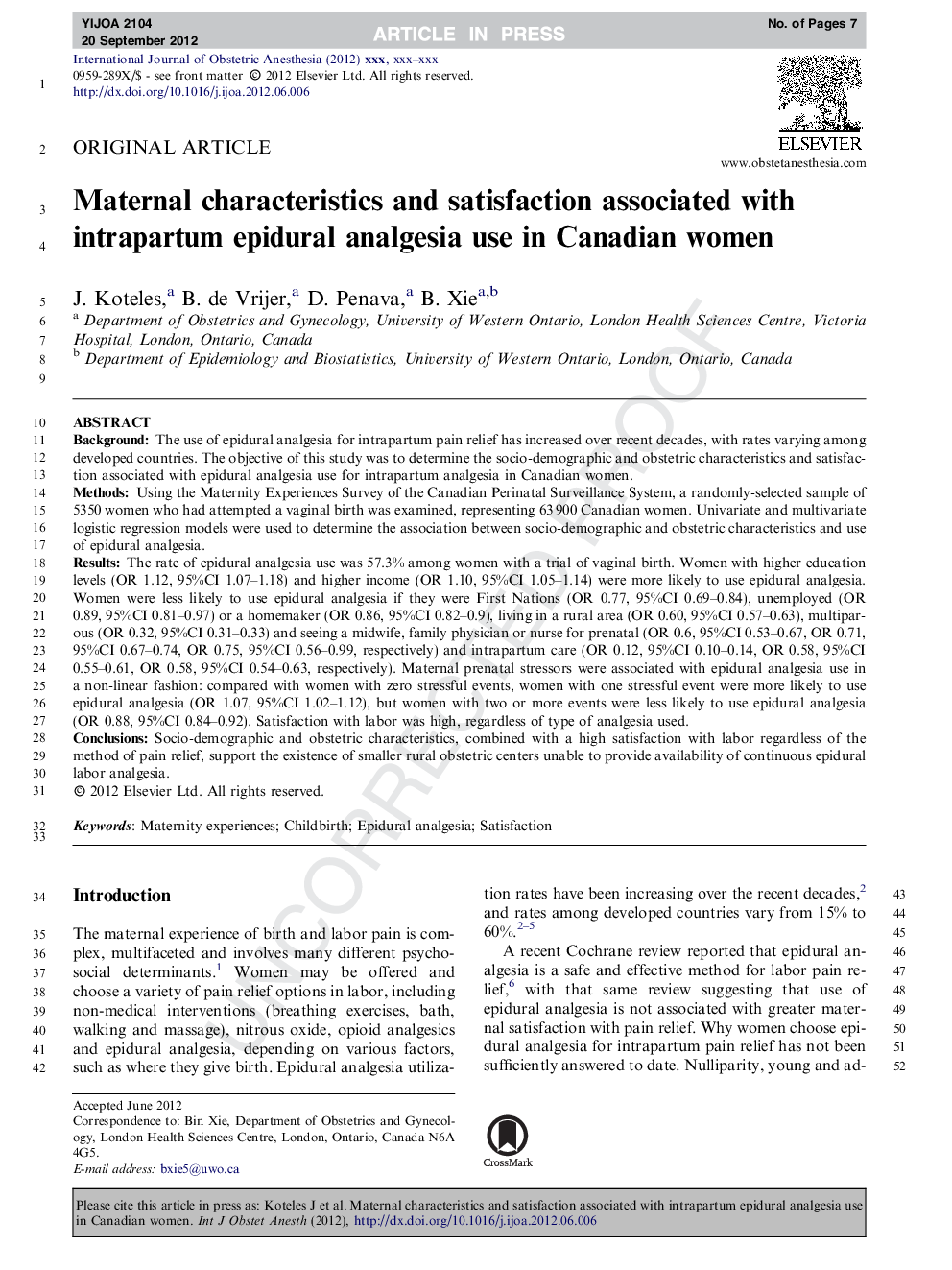| Article ID | Journal | Published Year | Pages | File Type |
|---|---|---|---|---|
| 2757885 | International Journal of Obstetric Anesthesia | 2012 | 7 Pages |
BackgroundThe use of epidural analgesia for intrapartum pain relief has increased over recent decades, with rates varying among developed countries. The objective of this study was to determine the socio-demographic and obstetric characteristics and satisfaction associated with epidural analgesia use for intrapartum analgesia in Canadian women.MethodsUsing the Maternity Experiences Survey of the Canadian Perinatal Surveillance System, a randomly-selected sample of 5350 women who had attempted a vaginal birth was examined, representing 63 900 Canadian women. Univariate and multivariate logistic regression models were used to determine the association between socio-demographic and obstetric characteristics and use of epidural analgesia.ResultsThe rate of epidural analgesia use was 57.3% among women with a trial of vaginal birth. Women with higher education levels (OR 1.12, 95%CI 1.07–1.18) and higher income (OR 1.10, 95%CI 1.05–1.14) were more likely to use epidural analgesia. Women were less likely to use epidural analgesia if they were First Nations (OR 0.77, 95%CI 0.69–0.84), unemployed (OR 0.89, 95%CI 0.81–0.97) or a homemaker (OR 0.86, 95%CI 0.82–0.9), living in a rural area (OR 0.60, 95%CI 0.57–0.63), multiparous (OR 0.32, 95%CI 0.31–0.33) and seeing a midwife, family physician or nurse for prenatal (OR 0.6, 95%CI 0.53–0.67, OR 0.71, 95%CI 0.67–0.74, OR 0.75, 95%CI 0.56–0.99, respectively) and intrapartum care (OR 0.12, 95%CI 0.10–0.14, OR 0.58, 95%CI 0.55–0.61, OR 0.58, 95%CI 0.54–0.63, respectively). Maternal prenatal stressors were associated with epidural analgesia use in a non-linear fashion: compared with women with zero stressful events, women with one stressful event were more likely to use epidural analgesia (OR 1.07, 95%CI 1.02–1.12), but women with two or more events were less likely to use epidural analgesia (OR 0.88, 95%CI 0.84–0.92). Satisfaction with labor was high, regardless of type of analgesia used.ConclusionsSocio-demographic and obstetric characteristics, combined with a high satisfaction with labor regardless of the method of pain relief, support the existence of smaller rural obstetric centers unable to provide availability of continuous epidural labor analgesia.
